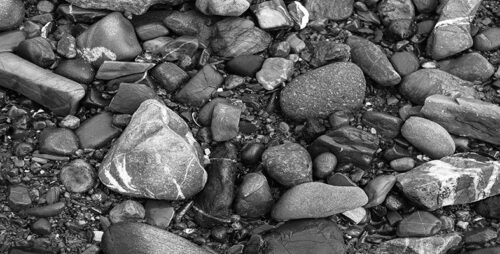Tectonic plate movements drive many geologic processes on Earth, from earthquakes to volcanos, yet how tectonic plates start sinking beneath one another is not well understood. Yale researchers David Bercovici and Elvira Mulyukova have proposed a new model in which tiny mineral grains in rocks mix and shrink at passive margins—inactive regions where sea floor meets continent—weakening the tectonic plates and causing sinking known as subduction.
As the near-surface layer of Earth’s mantle cools, it becomes denser, promoting subduction, but also becomes stiffer, opposing subduction. On most planets, subduction either does not occur or stiffening wins out, and plates do not sink. In contrast, Earth is unique and has a geologically active surface. Explaining how subduction initiates has attracted many theories. “The mystery for any rocky planet is if and when its surface will dive into the mantle,” Mulyukova said.
By developing a new theoretical model that spans three scales, from massive tectonic plates to individual rocks and microscopic grains, Bercovici and Mulyukova showed that tiny mineral grains could determine tectonic plate weakness. Bercovici and Mulyukova propose that at passive margins, mineral grains mix and shrink due to the tectonic stress, which, over a period of one hundred million years, weakens the plates, making them susceptible to subduction.
“These weak zones don’t heal. They don’t vanish quickly,” Bercovici said. “We have a mechanism for how to transform passive, inactive places on Earth into long-lived active plate boundaries.” By focusing on the action of tiny grains, the motion of tectonic plates may be predicted, revealing where their subduction zones form.
Citations
Bercovici, D., & Mulyukova, E. (2021). Evolution and demise of passive margins through grain mixing and damage. Proceedings of the National Academy of Sciences, 118(4).

